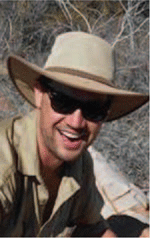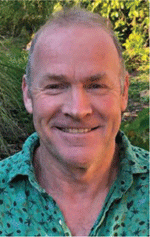New insights into the stratigraphy of the Otway Basin
Betina Bendall A D , Anne Forbes B , Dan Revie C , Rami Eid C , Shannon Herley C and Tony Hill AA South Australia Department for Energy and Mining (SA-DEM), GPO Box 320, Adelaide, SA 5001, Australia.
B Chemostrat Australia Pty Ltd, 1131 Hay Street, West Perth, WA 6005, Australia.
C Geological Survey of Victoria (GSV), Level 17, 1 Spring Street, Melbourne, Vic. 3000, Australia.
D Corresponding author. Email: Betina.Bendall@sa.gov.au
The APPEA Journal 60(2) 691-696 https://doi.org/10.1071/AJ19035
Accepted: 19 February 2020 Published: 15 May 2020
Abstract
The Otway Basin is one of the best known and most actively explored of a series of Mesozoic basins formed along the southern coastline of Australia by the rifting of the Antarctic and Australian plates during the Cretaceous. The basin offers a diversity of play types, with at least three major sedimentary sequences forming conventional targets for petroleum exploration in the onshore basin. The Penola Trough in South Australia has enjoyed over 20 years of commercial hydrocarbon production from the sandstones of the Early Cretaceous Otway Group comprising the Crayfish Subgroup (Pretty Hill Formation and Katnook sandstones) and Eumeralla Formation (Windermere Sandstone Member). Lithostratigraphic characterisation and nomenclature for these sequences are poorly constrained, challenging correlation across the border into the potentially petroleum prospective Victorian Penola Trough region. The Geological Survey of Victoria (GSV), as part of the Victorian Gas Program, commissioned Chemostrat Australia to undertake an 11-well chemostratigraphic study of the Victorian Otway Basin. The South Australia Department for Energy and Mining, GSV and Chemostrat Australia are working collaboratively to develop a consistent, basin-wide schema for the stratigraphic nomenclature of the Otway Basin within a chemostratigraphic framework. Variability in the mineralogy and hence inorganic geochemistry of sediments reflects changes in provenance, lithic composition, facies changes, weathering and diagenesis. This geochemical variation enables the differentiation of apparently uniform sedimentary successions into unique sequences and packages, aiding in the resolution of complex structural relationships and facies changes. In this paper, we present the preliminary results of detailed geochemical analyses and interpretation of 15 wells from across the Otway Basin and the potential impacts on hydrocarbon prospectivity.
Keywords: chemostratigraphy, Crayfish Subgroup, lithostratigraphy, Penola Trough, Pretty Hill Formation.

Betina Bendall has a BSc (Hons) and a PhD in Geology from the School of Earth and Environmental Sciences at the University of Adelaide and a PGrad Dip in Environmental Management from Charles Sturt University. She currently holds the position of Chief Geoscientist in the Energy Resources Division in the South Australia Department for Energy and Mining and has previously worked in the minerals and geothermal industries in Australia and the petroleum industry in the United Arab Emirates. |

Daniel Revie has a MSc (Petroleum Geoscience) from the University of Adelaide’s Australian School of Petroleum, a PGrad Dip in Education and a BSc (Hons) from the University of Melbourne. He currently works as a Senior Energy Geoscientist at the Geological Survey of Victoria (GSV). Previously he has held roles at the Northern Territory Geological Survey, Total E&P, Rio Tinto, BHP Billiton, St. Barbara Limited, OM Cawse Nickel and has worked as a secondary school science teacher. |

Anne Forbes has a BA (Hons) and MSc from the University of Cambridge in Natural Science and a PhD from the Open University in Volcanology, where she studied the interaction of lava flows with ice and water. She joined Chemostrat Australia in January 2014 and has since undertaken chemostratigraphy studies in most of Australia’s principle petroleum producing basins. She is a member of PESA and the Geological Society of London. |

Rami Eid has a BSc (Hons) from the University of Adelaide’s Australian School of Petroleum and a PhD from the University of Edinburgh where he studied the potential of geophysical methods to monitor CO2 sequestration and migration from underground storage sites. He currently works for the GSV as a Senior Petroleum Geomodeller assessing Victoria’s gas prospectively, for both hydrocarbon exploration and underground gas storage, in relation to the Victorian Gas Program. Rami is a member of PESA and SPE. |

Shannon S. Herley has a BEnvSc and BSc (Hons) in Geosciences from Monash University. She is currently working for the GSV as a Basin Analyst while taking time off from her PhD research, which is focused on fluvial sedimentology. Previously she has held multiple roles with the School of Earth, Atmosphere and Environment at Monash University including Undergraduate Lead Teaching Associate, and Teaching Associate for the Outreach, John Monash Science School and PrimeSCI! programmes. |

Tony Hill graduated with a BSc in Applied Geology from the Royal Melbourne Institute of Technology in 1980. He has worked extensively in several petroleum basins across Australia and also worked in the fields of hydrogeology and geothermal energy. He is currently Deputy Director within the Energy Resources Division of the South Australian Department for Energy and Mining. |
References
Charles, A., Hannaford, C., Korasidis, V., Lignum, J., Macphail, M., Mantle, D., Morgan, R., Schioler, P., and Young, M. (2019). New palynology results from legacy core and cuttings Onshore Otway Basin, Victoria. Victorian Gas Program Technical Report 7. Department of Jobs, Precincts and Regions, Victoria.Chemostrat Australia (2014). Chemostratigraphic analysis of Pyrus-1 and Sawpit-2. Adelaide, South Australia. Unpublished Report prepared for Beach Energy Ltd.
Chemostrat Australia (2017). Chemostratigraphy of the Crayfish Group, Otway Basin, South Australia. Chemostrat Australia Pty Ltd. Unpublished Report prepared for Beach Energy Ltd.
Chemostrat Australia (2019). Updated chemostratigraphy of Sawpit-2, Penola Trough, South Australia. Unpublished Report prepared for South Australia Department for Energy and Mining.
Duddy, I. R. (2003). Chapter 9, Mesozoic. In ‘Geology of Victoria’. (Ed W.D. Birch.) pp. 239–288. (Geological Society of Australia (Victoria Division): Melbourne.)
Forbes, A., Munday, S., and Revie, D. (2020). An elemental chemostratigraphic study, Onshore Otway Basin, Victoria. Victorian Gas Program Technical Report 12. Geological Survey of Victoria. Department of Jobs, Precincts and Regions. Melbourne, Victoria.
Morgan, R., Alley, N. F., Rowett, A. I., and White, M. R. (1995). Biostratigraphy. In ‘The Petroleum Geology of South Australia, Volume 1: Otway Basin. South Australia’. (Eds J. G. G. Morton and J. F. Drexel.) pp. 95–102. (SA Department of Mines and Energy: Adelaide.)
Morton, J. G. G., Alexander, E. M., Hill, A. J., and White, M. R. (1995). Lithostratigraphy and environments of deposition. In ‘The Petroleum Geology of South Australia, Volume 1: Otway Basin. South Australia’. (Eds J. G. G. Morton and J. F. Drexel.) pp. 47–94. (SA Department of Mines and Energy: Adelaide.)
Price, P. L. (1993). Palynostratigraphy, organic facies and geochemistry of Sawpit-1 Otway Basin. Unpublished Report prepared for Oil Company of Australia. Appendix 10 in Sawpit 1 Well Completion Report.


